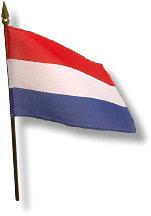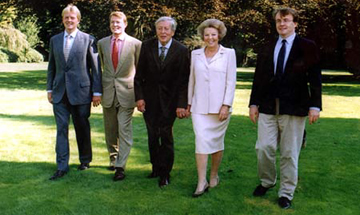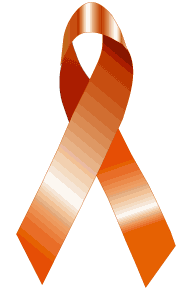
Koninginnedag

The Dutch Queen's official birthday (Koninginnedag) is a national holiday, which is celebrated by street parties and other events.The Queen and other members of the royal family visit the festivities in one or perhaps two different places each year. The royal visits are always broadcast live on television.

From left: Crown Prince Willem-Alexander, Prince Constantijn, Prince Claus (deceased) and Queen Beatrix, and Prince Johan Friso
A tradition which has been around since the start
of the celebration was the wearing of orange ribbons like this.

Queen's Day was first celebrated here on 30 April 1949 to honour the birthday of Queen Juliana of Holland. However, "Koninginnedag" has only been celebrated in its current form 1980 onwards. When the current Queen of Holland Beatrix, chose her mother's birthday as the day for her inauguration. She also declared that in the future, the 30 April would remain Koninginnedag, as a mark of honour to her mother. Beatrix herself was born on 31 January, but at this time of year it is too cold for open-air festivities. Normally, she and her husband Prince Claus visit several Dutch towns during the day, along with other family members. It's the Queen amongst her people, the picture postcard image of Dutch royalty.
During the reigns of Queen Wilhelmina and Queen Juliana, it was the custom to celebrate Koninginnedag on the Queen's birthday - 31 August and 30 April respectively. On the day of her investiture, 30 April 1980, Queen Beatrix stated that she wished to continue celebrating it on 30 April, as a mark of respect for her mother, Queen Juliana.
Prinsessedag The forerunner of the current public holiday was celebrated for the first time on 31 August 1889, Princess Wilhelmina's birthday. It was an initiative of the Liberal Party in the hope that a symbol designed to foster national unity would promote unity within its own ranks. As the day marked the end of the summer, it replaced the local harvest festivals normally held at that time of the year. The first real Koninginnedag took place on 31 August 1891, after the death of King William III.